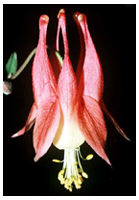Botany 940 - Systematics Seminar
Key Innovations


Spring 2003
Tuesday 12: 05-12:55
D. Baum, P. Berry, K. Sytsma - instructors
The focus of this seminar will be to examine questions like: How do we explain the diversity of organismal form and function? To what extent is this diversity an effect of the production of morphological and functional key innovations? How do we test whether a key innovation is correlated with the adaptive radiation of that clade? How can we reject null models of speciation rate, tree shape in order to accept the causality of key innovations in species number and tree shape? How can sister group relationships in phylogenetic trees be used to address these issues?
We will read the historical literature dealing with these questions, more modern analytical approaches to address the issues, and critically examine many of the examples of putative key innovations in plants and animals. The seminar is thus appropriate for those interested in ecology, systematics, diversity, and evolutionary biology in general. One or two papers will be read each week by all participants - faculty, staff, enrolled graduate students, and regular visitors. Approximately two days prior to the noon seminar, the names of two participants will be randomly selected to prepare critical overheads from the papers and initiate the discussion. PDF versions of the papers will be available through the links below.
| Date | Reading | Title + other sources |
| February 4 |
Testing whether certain traits have caused amplified diversification: an improved method based on a model of random speciation and extinction. |
|
|
other readings: Slowinski & Guyer 1989; Savage 1983; Gould et al. 1977 |
||
|
February 11 |
The role of historical factors in the evolution of complex organismal functions |
|
| February 18 | Cracraft 1990 | The origin of evolutionary novelties: pattern and process at different hierarchical levels. |
| February 25 | Sanderson & Donoghue 1994 | Shifts in diversification rates with the origin of angiosperms |
| March 4 | Hodges 1997a | Floral nectar spurs and diversification |
| other readings:Hodges & Arnold 1995; Hodges 1997b | ||
| March 11 | Heilbuth 2000 | Lower species richness in dioecious clades |
| March 25 | Bond & Opell 1998 | Testing adaptive radiation and key innovation hypotheses in spiders |
| April 1 | Hunter 1998a | Key innovations and the ecology of macroevolution |
| see response / rebuttal: Masters & Rayner 1998 / Hunter 1998b | ||
| April 8 | No reading | Key innovations and the evolution of Salvia - Jay Walker presentation |
| April 15 | Barraclough et al. 1999 | Testing whether ecological factors promote cladogenesis in a group of tiger beetles (Coleoptera : Cicindelidae) |
| April 22 | No class | |
| April 29 | Cavender-Bares et al. | Phylogenetic repulsion in the assembly of Floridian oak communities |
| May 6 | de Queiroz 2002 | Contingent predictability in evolution: key traits and diversification |
|
Other
Papers
|
||
| Pellmyr & Krenn 2002 | Origin of a complex key innovation in an obligate insect-plant mutualism | |
| Sanderson & Wojciechowski 1996 | Diversification rates in a temperate legume clade: Are there ''so many species'' of Astragalus (Fabaceae)? | |
| Dodd et al. 1999 | Phylogenetic analysis of trait evolution and species diversity variation among angiosperm families | |
| Smith 2001 | High species diversity in fleshy-fruited tropical understory plants | |